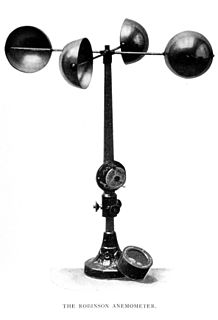
Wind speed, or wind flow velocity, is a fundamental atmospheric quantity caused by air moving from high to low pressure, usually due to changes in temperature. Note that wind direction is usually almost parallel to isobars, due to Earth's rotation.
Compressible flow is the branch of fluid mechanics that deals with flows having significant changes in fluid density. Gases, mostly, display such behaviour. While all flows are compressible, flows are usually treated as being incompressible when the Mach number is less than 0.3. The study of compressible flow is relevant to high-speed aircraft, jet engines, rocket motors, high-speed entry into a planetary atmosphere, gas pipelines, commercial applications such as abrasive blasting, and many other fields.
The von Karman Institute for Fluid Dynamics (VKI) is a non-profit educational and scientific organization which specializes in three specific fields: aeronautics and aerospace, environment and applied fluid dynamics, turbomachinery and propulsion. Founded in 1956, it is located in Sint-Genesius-Rode, Belgium.
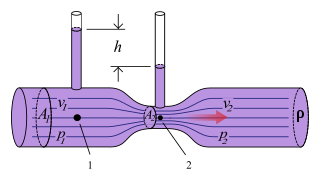
The Venturi effect is the reduction in fluid pressure that results when a fluid flows through a constricted section of a pipe. The Venturi effect is named after Giovanni Battista Venturi (1746–1822), an Italian physicist.

A water tunnel is an experimental facility used for testing the hydrodynamic behavior of submerged bodies in flowing water. It is very similar to a recirculating wind tunnel but with water as the working fluid, and related phenomena are investigated, such as measuring the forces on scale models of submarines or lift and drag on hydrofoils. Water tunnels are sometimes used in place of wind tunnels to perform measurements because techniques like particle image velocimetry (PIV) are easier to implement in water. For many cases as long as the Reynolds number is equivalent, the results are valid, whether a submerged water vehicle model is tested in air or an aerial vehicle is tested in water. For low Reynolds number flows, tunnels can be made to run oil instead of water. The advantage is that the increased kinematic viscosity will allow the flow to be a faster speed for a lower Reynolds number.
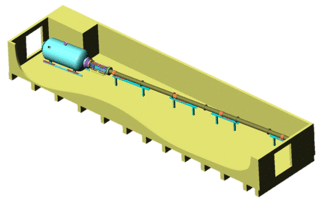
A Ludwieg tube is a cheap and efficient way of producing supersonic flow. Mach numbers up to 4 in air are easily obtained without any additional heating of the flow. With heating, Mach numbers of up to 11 can be reached.

A hypersonic wind tunnel is designed to generate a hypersonic flow field in the working section, thus simulating the typical flow features of this flow regime - including compression shocks and pronounced boundary layer effects, entropy layer and viscous interaction zones and most importantly high total temperatures of the flow. The speed of these tunnels vary from Mach 5 to 15. The power requirement of a wind tunnel increases with the cross section, the flow density and is directly proportional to the third power of the test velocity. Hence installation of a continuous, closed circuit wind tunnel remains a costly affair. The first continuous Mach 7-10 wind tunnel with 1x1 m test section was planned at Kochel am See, Germany during WW II and finally put into operation as 'Tunnel A' in the late 1950s at AEDC Tullahoma, TN, USA for an installed power of 57 MW. In view of these high facility demands, also intermittently operated experimental facilities like blow-down wind tunnels are designed and installed to simulate the hypersonic flow. A hypersonic wind tunnel comprises in flow direction the main components: heater/cooler arrangements, dryer, convergent/divergent nozzle, test section, second throat and diffuser. A blow-down wind tunnel has a low vacuum reservoir at the back end, while a continuously operated, closed circuit wind tunnel has a high power compressor installation instead. Since the temperature drops with the expanding flow, the air inside the test section has the chance of becoming liquefied. For that reason, preheating is particularly critical.

A supersonic wind tunnel is a wind tunnel that produces supersonic speeds (1.2<M<5) The Mach number and flow are determined by the nozzle geometry. The Reynolds number is varied by changing the density level. Therefore, a high pressure ratio is required. Apart from that, condensation of moisture or even gas liquefaction can occur if the static temperature becomes cold enough. This means that a supersonic wind tunnel usually needs a drying or a pre-heating facility. A supersonic wind tunnel has a large power demand, so most are designed for intermittent instead of continuous operation.

Seeding a material is a concept used in fluid dynamics to describe the act of introducing specific particulates or other foreign substances into a stream of fluid being evaluated. An altered fluid will be described as having a seeded flow.
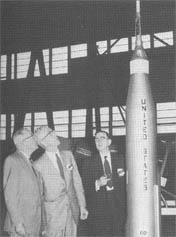
Ira H. Abbott was an American aerospace engineer. A graduate of MIT, Abbott worked for Langley Aeronautical Laboratory in 1929. He was a Director of Aeronautical and Space Research at NASA during the middle of the twentieth century and before that was employed by the National Advisory Committee for Aeronautics (NACA). Abbott supervised the X-15, supersonic transport, nuclear rocket and advanced reentry programs. He retired in 1962. As Assistant Director of NACA, Abbott was decisive in keeping Ames Research Center focused on research instead of moving into operations during the development of the proposed Orbiting Astronomical Observatory in 1960. In recognition for his "outstanding contributions" to airfoil research and his leadership, he was inducted into the first round of the NACA/NASA Hall of Fame on August 13, 2015.
The University of Texas at Arlington Aerodynamics Research Center (ARC) is a facility located in the southeast portion of the campus operated under the Department of Mechanical and Aerospace Engineering. It was established in 1986 as part of an expansion of UTA's College of Engineering. The ARC contributes to the vision of UTA and the University of Texas System to transform the university into a full-fledged research institution. It showcases the aerodynamics research activities at UTA and, in its history, has established itself as a unique facility at a university level. The wind tunnels and equipment in the facility were mainly built by scouting for and upgrading decommissioned equipment from the government and industry. Currently, Masters and Ph.D. students perform research in the fields of high-speed gas dynamics, propulsion, and Computational fluid dynamics among other projects related to aerodynamics.
The TreadPort Active Wind Tunnel is a unique immersive virtual environment that integrates locomotion interfaces with sensory cues such as visual, auditory, olfactory, radiant heat and wind display. The TPAWT augments the Sarcos Treadport consisting of the Cave automatic virtual environment(CAVE) with a subsonic wind tunnel built around the user environment, and adds wind to the virtual environment. The Treadport Active Wind Tunnel is one of the first virtual environments to include wind into the sensory experience of the user. Other systems considering wind display, directly use fans.
The Virginia Tech Stability Wind Tunnel is a medium-scale wind tunnel located at Virginia Polytechnic Institute and State University in Blacksburg, Virginia. With a test section measuring 6 by 6 ft and maximum wind speeds of approximately 262.6 ft/s (80.0 m/s), it is one of the largest university-owned wind tunnels in the United States, and is used for a wide variety of research projects within the college as well as being contracted out for commercial use, especially product testing. Professor William Devenport is the current Director, and Dr. Aurelien Borgoltz is the Assistant Director.

The Lockheed Martin X-59 QueSST is an American experimental supersonic aircraft being developed for NASA's Low-Boom Flight Demonstrator program. Preliminary design started in February 2016, with the X-59 scheduled for delivery in late 2021 for flight tests from 2022. It is expected to cruise at Mach 1.42 (1,510 km/h) and 55,000 ft (16,800 m), creating a low 75 Perceived Level decibel (PLdB) thump to evaluate supersonic transport acceptability.

The MARHy Hypersonic low density Wind Tunnel, located at the ICARE Laboratory in Orléans, France, is a research facility used extensively for fundamental and applied research of fluid dynamic phenomena in rarefied compressible flows. Its name is an acronym for Mach Adaptable Rarefied Hypersonic and the wind tunnel is recorded under this name under the European portal MERIL.

The PHEDRA High Enthalpy low density Wind Tunnel, located at the ICARE Laboratory in Orléans, France, is a research facility used extensively for fundamental and applied research on non equilibrium plasma flows and planetary atmospheric entries. Its name is an acronym for soufflerie à Plasma Hors Equilibre de Rentreés Atmosphériques. Phedra wind tunnel takes part of the European Landscape Network portal MERIL.
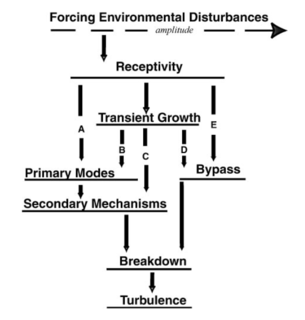
Bypass Transition is a kind of laminar to turbulent transition in a flow over a surface, in which some of pre-transitional events which are generally occurring in natural Laminar–turbulent transition, such as generation of two dimensional Tollmien-Schlichting waves, spanwise vorticity and three-dimensional vortex breakdown are bypassed and through some secondary instability mode the laminar boundary layer becomes a turbulent boundary layer.


